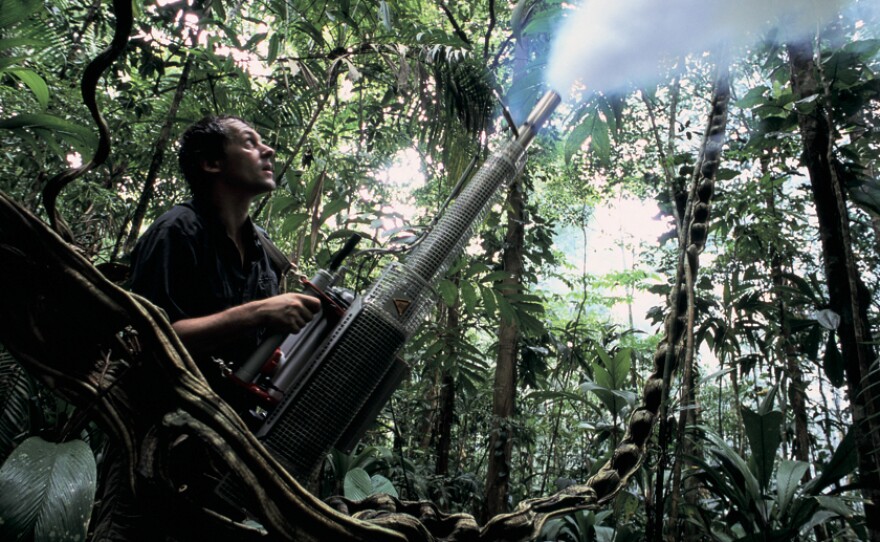There are more species of insects than pretty much anything else in the world. And scientists know there are millions they haven't even identified yet. Now, in a tropical rainforest in Panama, a multinational team of scientists has just completed the first ever insect census.
Scott Miller, an entomologist at the Smithsonian who worked on the Panama, shows off one of the species from the survey that's at the National Museum of Natural History's insect zoo in Washington, D.C.
"We're standing in front of a colony of leafcutter ants," he says. "There you see one of the worker's who's carrying a leaf above its head and across its back as if it were sort of a sail, it looks sort of the like a sailboat, walking across the rock here."
Miller says the leafcutter ant is one of thousands of arthropod species in Panama's San Lorenzo forest. Arthropod are insects, plus spiders, mites, centipedes and pretty much everything else that lives on land and has at least six legs.
Many researchers thought that counting all the arthropods in even a small area of rainforest would be impossible. But that didn't stop Yves Basset, an entomologist with the Smithsonian Tropical Research Institute in Panama who led the study.
"We sampled every arthropod from the soil to the top of the forest — we call that the canopy," he says.
That canopy was as much as 13 stories above the forest floor. So Basset and his multinational team of researchers and volunteers had to get creative. They got help from professional tree climbers. They used a helium balloon to soar above the foliage. They had a helicopter lower a giant inflatable sampling platform onto the tree tops. And they also had construction crane right in the middle of the forest.
"You are — the scientist — actually sitting in a little gondola, a little, sort of cage, and then you have a radio and then you tell the operator where you want to go," Bassett says.
The floor of the rainforest is humid, but up in the canopy it's sunny, dry, and very windy.
"If you are sort of dangling on a rope when there is big wind, this could be dangerous," he says. "Also some branches might fall, so you have to be a bit careful about this."
It took Basset and his team two years to collect the specimens and send them out to labs all over the world for identification. The Smithsonian's Scott Miller says it took more than 100 scientists another eight years to process them all.
Miller says to identify the species, researchers relied in part on DNA analysis, and in part on the arthropods' physical characteristics.
"The hard parts of the male and female genitalia in many insects give us the diagnostic characters for species," Miller says.
In all, Basset and his colleagues had collected almost 130,000 arthropods — more than 6,000 species — from a total area of forest not much bigger than a football field. They published their results this week in the journal Science.
May Berenbaum, an insect ecologist at the University of Illinois at Urbana-Champaign, who wasn't involved in the Panama study, says nothing like this project has ever been done before. And it's important because of the critical role arthropods play in nature.
"They are what make communities run. They are the garbage disposers. They are the pollinators. They are the food for other organisms," she says.
And she says as development and climate change threaten places like tropical rainforests, we need all the baseline information we can get.
"If you don't know what's there, you don't know what's missing, and you don't know how to set aside, or how to save what you need to preserve the entire community," she says.
Berenbaum says she hopes there will be many more studies like this one.
Copyright 2021 NPR. To see more, visit https://www.npr.org.

















